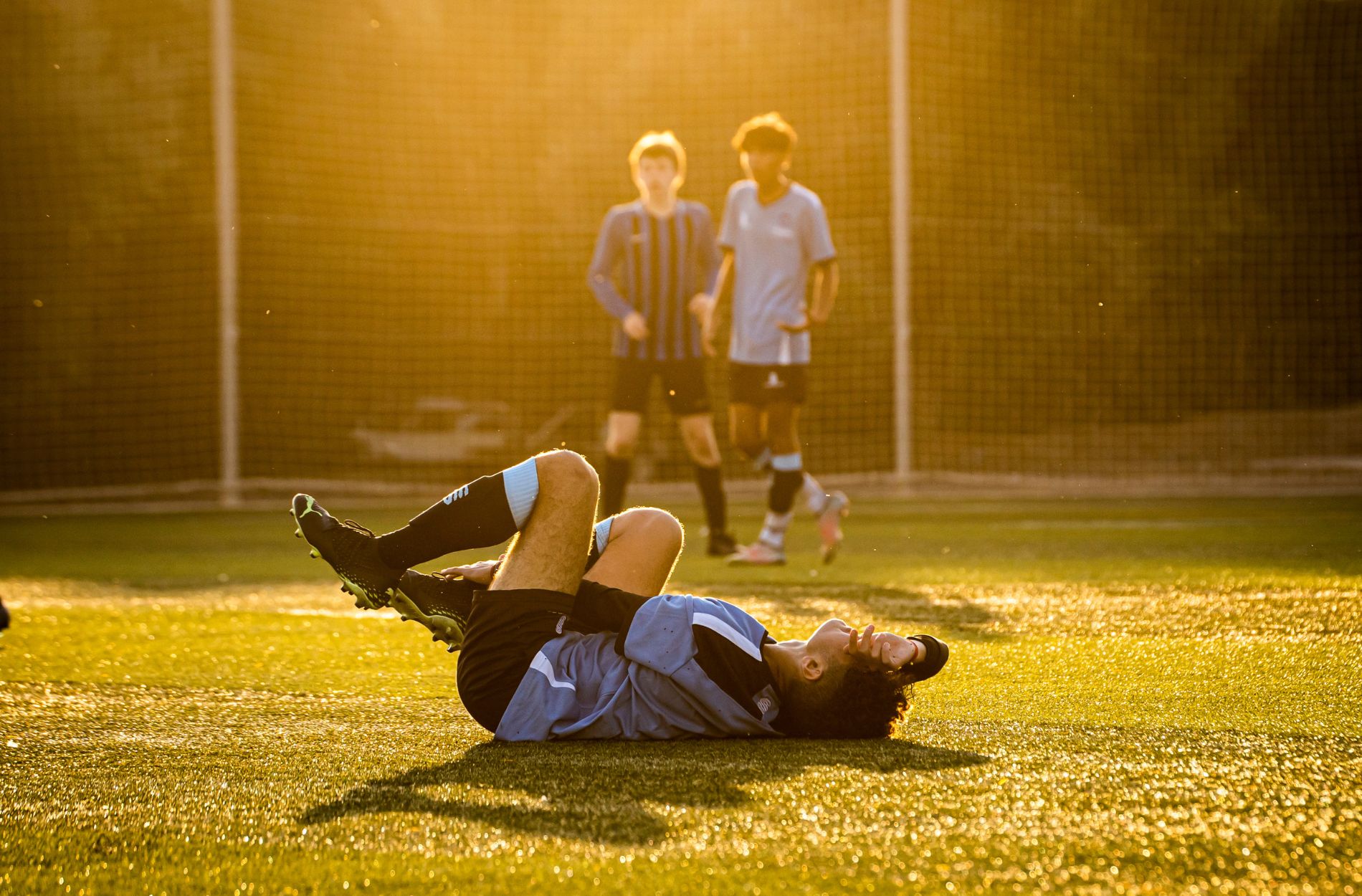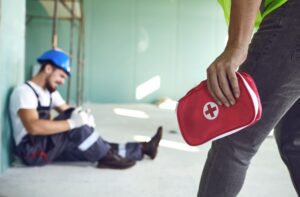Playing sports is a fantastic way to stay fit and have fun, but it can also lead to injuries. Whether it’s a twisted ankle during a football match or a sprained wrist in a tennis game, sports injuries are common. They can range from minor cuts and bruises to more serious issues like fractures or torn ligaments.
Instant action is crucial when these injuries happen. Applying first aid swiftly can prevent minor injuries from becoming major setbacks. This helps athletes recover faster and return to their favourite sports activities. It’s not just about treating the injury; it’s about ensuring the athlete feels supported and taken care of.
Understanding basic first aid for sports is essential for anyone involved in physical activities. Knowing how to respond effectively makes a huge difference in the athlete’s recovery time. Having the right skills and knowledge ensures athletes receive the best care when they need it most. This proactive approach keeps sports enjoyable and safe for everyone involved.
Common Sports Injuries and Their Impact
Sports injuries are quite common, especially in activities involving physical contact or quick movements. Some of the most frequent sports injuries include sprains, fractures, dislocations, and concussions. Sprains, particularly to ankles or wrists, happen when ligaments stretch beyond their limit. Fractures refer to broken bones and are significant injuries needing immediate attention to prevent further damage.
These injuries can have various effects on athletes, both in the short and long term. Short-term effects often include pain, swelling, and difficulty using the injured body part, which can sideline athletes for days or weeks. Long-term impacts might involve chronic pain or ongoing weakness, affecting an athlete’s ability to perform at their best and potentially ending their sports career prematurely.
Immediate care is crucial when handling sports injuries, as it can significantly reduce recovery time and prevent complications. Prompt application of first aid can minimise the severity of the injury, allowing athletes to recover more quickly. Timely care also promotes rapid healing, reducing discomfort and helping maintain physical fitness. This makes understanding and delivering effective first aid essential for anyone involved in sports, ensuring better outcomes for athletes.
Essential First Aid Techniques for Sports
Knowing the right first aid techniques for sports injuries can make a huge difference in recovery. Here are some basic first aid steps to take for common injuries:
1. Sprains and Strains:
– Use compression bandages to reduce swelling.
– Elevate the injured limb above heart level.
– Apply ice packs wrapped in cloth for 15-20 minutes.
2. Fractures:
– Immobilise the area with a splint.
– Avoid realigning the bone.
– Seek medical help immediately.
3. Cuts and Abrasions:
– Clean the wound with water.
– Apply pressure to stop bleeding.
– Cover with a sterile dressing.
The RICE method (Rest, Ice, Compression, Elevation) is effective for managing sprains and strains. Rest helps avoid further damage. Ice reduces swelling and pain. Compression, through bandages, supports the injured area, and Elevation minimises swelling. This method not only alleviates symptoms but also promotes faster recovery.
First aid kits are essential in sports settings. They contain necessary tools and supplies, from bandages to antiseptics, for handling immediate injuries. Keeping a well-stocked kit on hand ensures that immediate care can be given, stabilising the athlete until professional help is available. This preparation makes a significant difference in managing and mitigating sports injuries effectively.
Training and Preparation for Sports First Aid
Specialised first aid training is crucial for those involved in sports, particularly coaches, trainers, and the athletes themselves. Understanding how to respond to injuries promptly and effectively can make a significant difference in outcomes. Proper training ensures that everyone knows how to act confidently in emergencies, reducing panic and improving the accuracy of care administered.
Rehearsing emergency action plans is beneficial for sports teams. Regular drills help foster a quick and coordinated response during actual incidents. Practising these procedures allows team members to become familiar with their roles and responsibilities, ensuring that everyone knows what to do when an injury occurs. This preparedness can save crucial time, which is often vital in managing sports injuries effectively.
Here are some tips on maintaining readiness for potential sports injuries:
– Regular Practice Sessions: Keep first aid knowledge fresh with consistent practice.
– Update Equipment: Regularly check first aid kits to ensure they are fully stocked and items are within expiry dates.
– Role Assignments: Clearly define roles for team members in emergencies to streamline responses.
Being prepared with the right knowledge and tools empowers sports teams to handle injuries effectively, ensuring the safety and well-being of all players.
Long-term Care and Rehabilitation
Transitioning from first aid to professional medical care is a crucial step in the recovery process. After stabilising the injury with initial care, seeking professional medical evaluation ensures a proper diagnosis and treatment plan. This transition helps identify any underlying issues that might require further attention, ensuring comprehensive care for the injured athlete.
Rehabilitation and physiotherapy play an essential role in sports injury recovery. These processes help restore movement, strength, and function to the injured area. With the guidance of professional therapists, athletes engage in targeted exercises and recovery routines designed to address their specific needs. This focused approach aids in a faster return to normal activities and reduces the risk of reinjury.
Prevention strategies are crucial in limiting the recurrence of injuries. Athletes should engage in proper training and conditioning routines that enhance flexibility, strength, and endurance. Warm-up exercises, strength training, and regular physiotherapy can help protect against future injuries. Educating athletes on proper techniques and body mechanics further ensures they remain in peak condition, allowing them to enjoy their sports safely.
Conclusion
Sports injuries, while common, need not hinder an athlete’s journey. With proper first aid and training, these injuries can be managed effectively, ensuring athletes get back on track swiftly and safely. Each step, from immediate care to long-term rehabilitation, plays a vital role in the recovery process. Being prepared with the right skills and equipment makes all the difference in dealing with unexpected injuries on the field.
Looking to enhance your skills in sports first aid? CR Training offers comprehensive basic first aid training tailored for coaches, athletes, and sports enthusiasts. Gain the essential knowledge to handle sports injuries confidently and ensure the safety of everyone involved. Join us to make a lasting impact in your sports community with expertise in first aid. Visit our website to learn more about the courses we offer and get started today!




